
Guatemala City, officially New Guatemala of Assumption, known locally as Guate, is the capital and largest city of Guatemala, and the most populous urban area in Central America. The city is located in the south-central part of the country, nestled in a mountain valley called Valle de la Ermita. The city is the capital of the Municipality of Guatemala and of the Guatemala Department.

Quetzaltenango is both the seat of the namesake Department and municipality, in Guatemala.
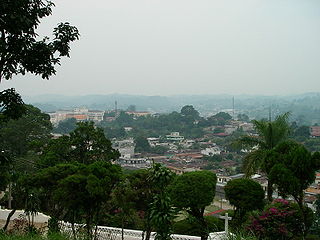
Cobán, fully Santo Domingo de Cobán, is the capital of the department of Alta Verapaz in central Guatemala. It also serves as the administrative center for the surrounding Cobán municipality. It is located 219 km from Guatemala City.

Antigua Guatemala, commonly known as Antigua or La Antigua, is a city in the central highlands of Guatemala. The city was the capital of the Captaincy General of Guatemala from 1543 through 1773, with much of its Baroque-influenced architecture and layout dating from that period. These characteristics had it designated as a UNESCO World Heritage Site in 1979. Antigua Guatemala serves as the capital of the homonymous municipality and the Sacatepéquez Department.
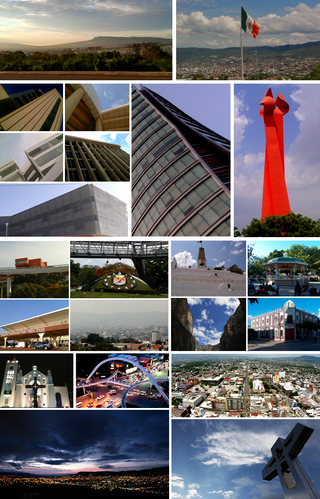
Tuxtla Gutiérrez, or commonly known as Tuxtla, is the capital and the largest city of the Mexican southeastern state of Chiapas. It is the seat of the municipality of the same name, the most developed and populated in the state. A busy government, commercial and services-oriented city, Tuxtla had one of the fastest-growing rates in Mexico in the last 40 years. Unlike many other areas in Chiapas, it is not a major tourist attraction, but a transportation hub for tourists coming into the state, with a large airport and a bus terminal.

Quiché is a department of Guatemala. It is in the heartland of the Kʼicheʼ (Quiché) people, to the north-west of Guatemala City. The capital is Santa Cruz del Quiché. The word Kʼicheʼ comes from the language of the same name, which means "many trees".

The music of Guatemala is diverse. Music is played all over the country. Towns also have wind and percussion bands that play during the lent and Easter-week processions as well as on other occasions. The marimba is an important instrument in Guatemalan traditional songs. The oldest documented use of marimba in the Americas dates to 1680 during celebrations at Santiago de los Caballeros de Guatemala.
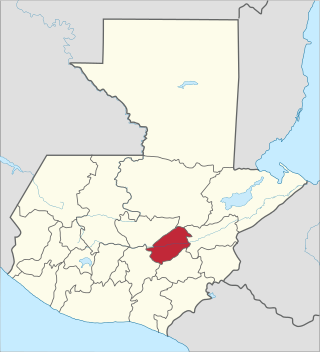
El Progreso is a department in Guatemala. The departmental capital is Guastatoya. The Spanish established themselves in the region by 1551, after the Spanish conquest of Guatemala. El Progreso was declared a department in 1908, but was dissolved in 1920 before being reestablished in 1934. Guastatoya was badly affected by the 1976 Guatemala earthquake.

Tak'alik Ab'aj is a pre-Columbian archaeological site in Guatemala. It was formerly known as Abaj Takalik; its ancient name may have been Kooja. It is one of several Mesoamerican sites with both Olmec and Maya features. The site flourished in the Preclassic and Classic periods, from the 9th century BC through to at least the 10th century AD, and was an important centre of commerce, trading with Kaminaljuyu and Chocolá. Investigations have revealed that it is one of the largest sites with sculptured monuments on the Pacific coastal plain. Olmec-style sculptures include a possible colossal head, petroglyphs and others. The site has one of the greatest concentrations of Olmec-style sculpture outside of the Gulf of Mexico.

A topographic profile or topographic cut is a representation of the relief of the terrain that is obtained by cutting transversely the lines of a topographic map. Each contour line can be defined as a closed line joining relief points at equal height above sea level. It is usually drawn on the same horizontal scale as the map, but the use of an exaggerated vertical scale is advisable to underline the elements of the relief. This can vary according to the slope and amplitude of the terrestrial relief, but is usually three to five times the horizontal scale.

San Cristóbal Verapaz is a town, with a population of 20,961, and a municipality in the Guatemalan department of Alta Verapaz. It is located approximately 29 km from Cobán, the capital of Alta Verapaz and about 210 km from Guatemala City. San Cristóbal belongs to the Pokimchi' linguistic area. Its main income source is the «Cobán» shoe factory, which specializes in industrial rubber boots, which are sold both locally and internationally.

Jocotenango is a town and small municipality in the northeast section of Guatemalan department of Sacatepéquez, and is situated north of Antigua Guatemala. It has seven zones, two villages, and one hamlet. According to the 2018 census, the municipality has a total population of 21,657 of which 1,680 are native population and the balance are non-indigenous; and approximately 19,280 live in an urban area, while the balance are rural dwellers.
San Juan Cotzal is a town and municipality in the Guatemalan department of El Quiché. San Juan Cotzal is part of the Ixil Community, along with Santa Maria Nebaj and San Gaspar Chajul.

Chiantla is a town and municipality in the Guatemalan department of Huehuetenango. The municipality is situated at 2,000 metres above sea level and covers an area of 521 km2. The annual festival is on January 28.
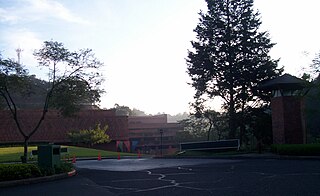
Francisco Marroquín University, also known by the abbreviation UFM, is a private, secular university in Guatemala City, Guatemala. It describes its mission as "to teach and disseminate the ethical, legal, and overall economic principles of a society of free and responsible persons."
Zaragoza is a town, with a population of 11,176, and a municipality in the Chimaltenango department of Guatemala.
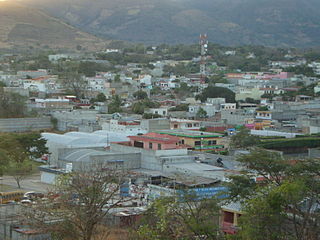
El Progreso, also El Progreso, Achuapa, is a town and municipality in the Jutiapa department of Guatemala. In 2018 the municipality had a population of 22,114 The Pan American Highway passes to the south of the main town, connecting it with Jutiapa, 11 kilometres (6.8 mi) to the southwest. The Morán, Chiquito and Ostúa rivers flow through the municipality. The main items produced locally include cigars, leather products, furniture, tiles and mud bricks.

Parish of San José, located in the city of Antigua Guatemala, is part of the Archdiocese of Santiago de Guatemala and is located in a section of the old Primate Cathedral of Antigua Guatemala, which was destroyed by the 1773 Guatemala earthquakes. The first construction of the cathedral began in 1545 with the rubble brought from the destroyed settlement in the Almolonga Valley, which had been a second attempt to found a town in the region. Its complete construction was hampered by frequent earthquakes over the years. On April 7, 1669, the temple was demolished and a second sanctuary would be inaugurated in 1680 under the direction of Juan Pascual and José de Porres, there is also evidence that the Spanish engineer and image maker Martín de Andújar Cantos worked on its reconstruction.

The Lienzo de Quauhquechollan is a 16th-century lienzo of the Nahua, a group of indigenous peoples of Mexico. It is one of two surviving Nahua pictorial records recounting the Spanish conquest of Guatemala and the earliest surviving maps of what is now Guatemala.
Nery Evelio Cano Arreaga was a Guatemalan conductor, composer and arranger. He was a well known trumpet player in Guatemala.


















